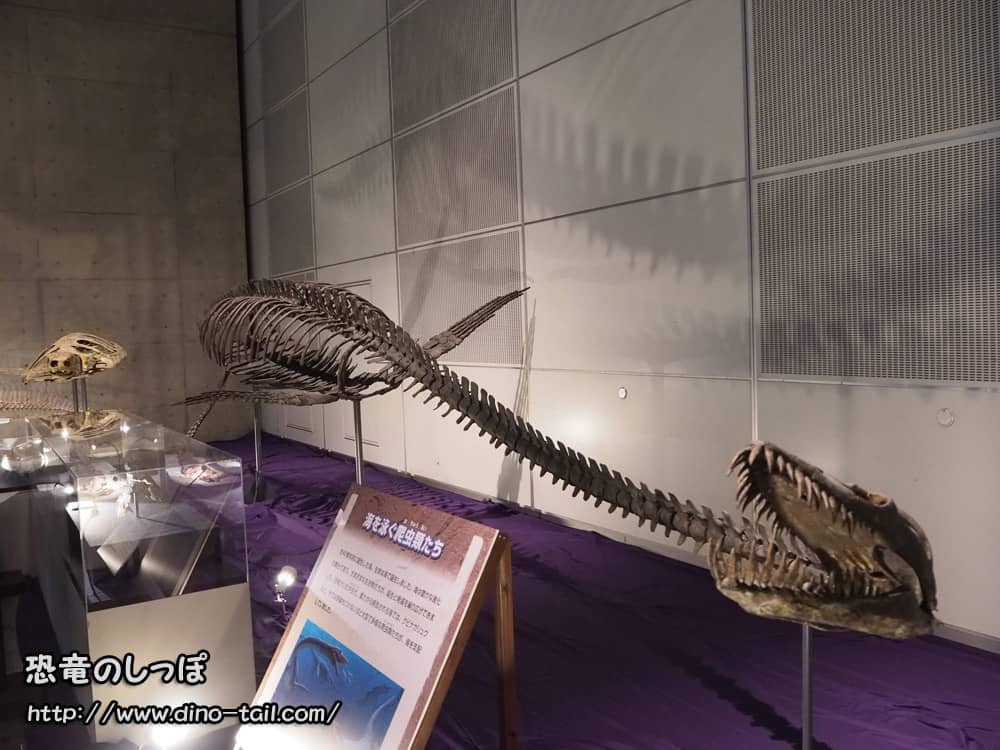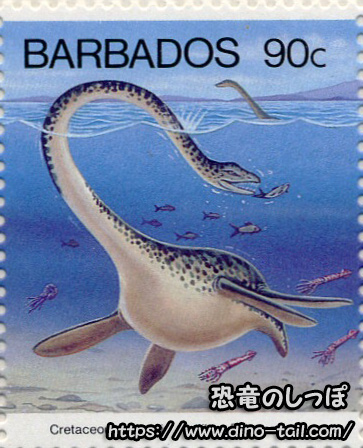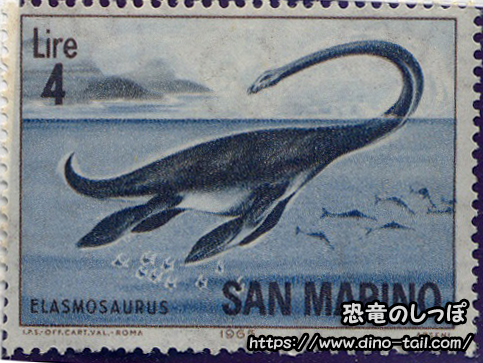About Elasmosaurus (Plesiosaur)
| Scientific Name (Genus) | Elasmosaurus |
| Meaning of Name | Thin-plate lizard |
| Classification | Plesiosauria, Elasmosauridae |
| Total Length | Approx. 14m (46 ft) |
| Diet | Carnivorous (piscivorous) |
| Period | Late Cretaceous (approx. 80.5 million years ago) |
| Sub-classification / Species Name | Elasmosaurus platyurus (Type species) |
| Year of Paper Publication | 1868 |
Features

Elasmosaurus is a very famous plesiosaur that lived in the Western Interior Seaway, which covered North America during the Late Cretaceous (about 80.5 million years ago). Its most striking feature is its incredibly long neck. Composed of more than 70 cervical vertebrae (neck bones), the neck reached over 7 meters (23 feet) in length, accounting for more than half of its total body length.
Various theories have been proposed about the function of this long neck. It was once thought that it could bend flexibly like a snake to strike at prey from above the water. However, recent studies suggest the neck was not very flexible and was mainly moved horizontally to approach schools of fish without being noticed, allowing it to strike quickly.
- Incredibly long neck: It had as many as 72 cervical vertebrae, more than any other known animal.
- Underwater hunting: It is believed to have hunted fish and other prey efficiently by using its long neck to bring its head close to prey while keeping its body at a distance.
- Presence of gastroliths: Gastroliths (stomach stones) have been found with its fossils. It is presumed these were swallowed to aid digestion or to help control buoyancy.
Discovery and the "Bone Wars"

The first fossil of Elasmosaurus was discovered in Kansas, USA, in 1867. The renowned paleontologist Edward Drinker Cope studied this fossil. However, in reconstructing this creature with its unprecedentedly long neck, he made a major mistake.
Cope mistook the extremely long neck for the tail and attached the skull to the end of the tail in his reconstruction. This error was harshly pointed out by his rival, Othniel Charles Marsh. This incident is famous as the event that triggered the intense rivalry between the two in American paleontology, known as the "Bone Wars."
Elasmosaurus Gallery


